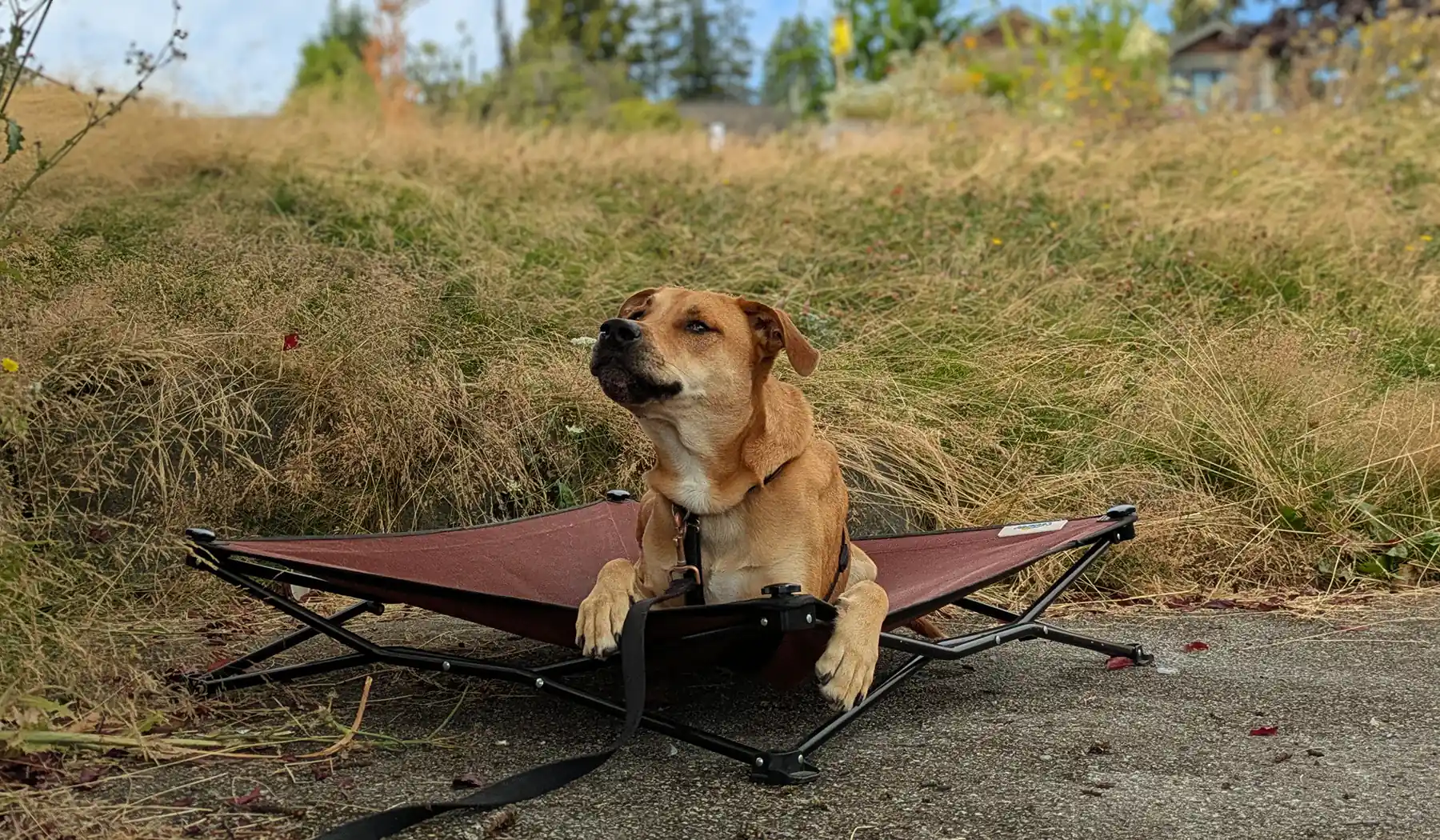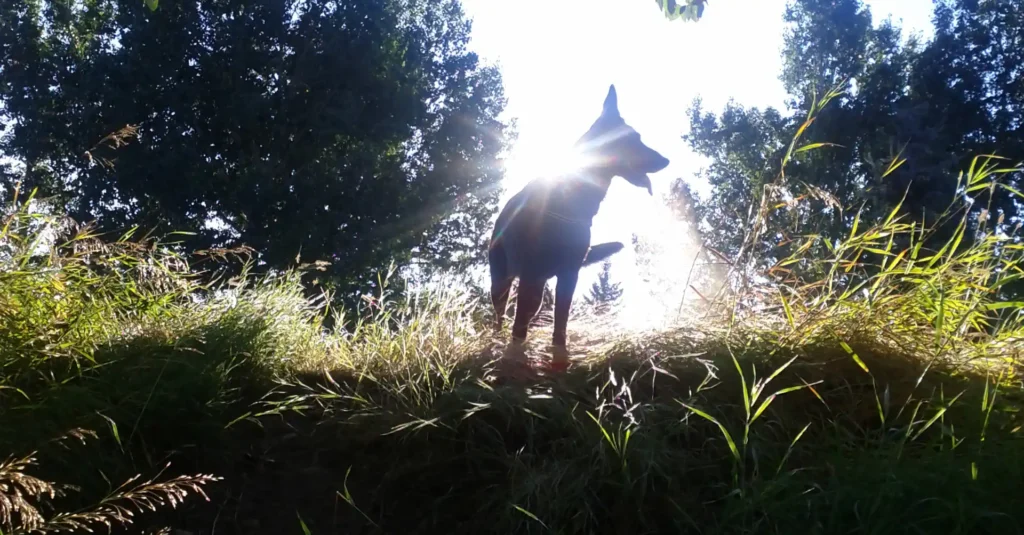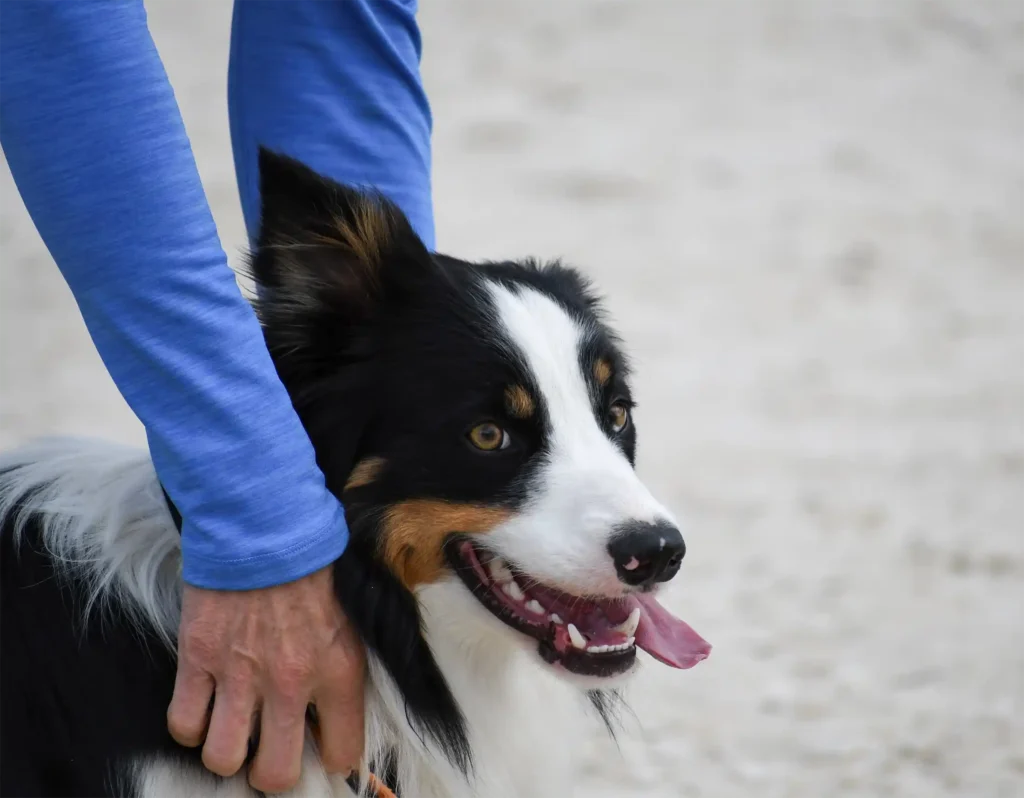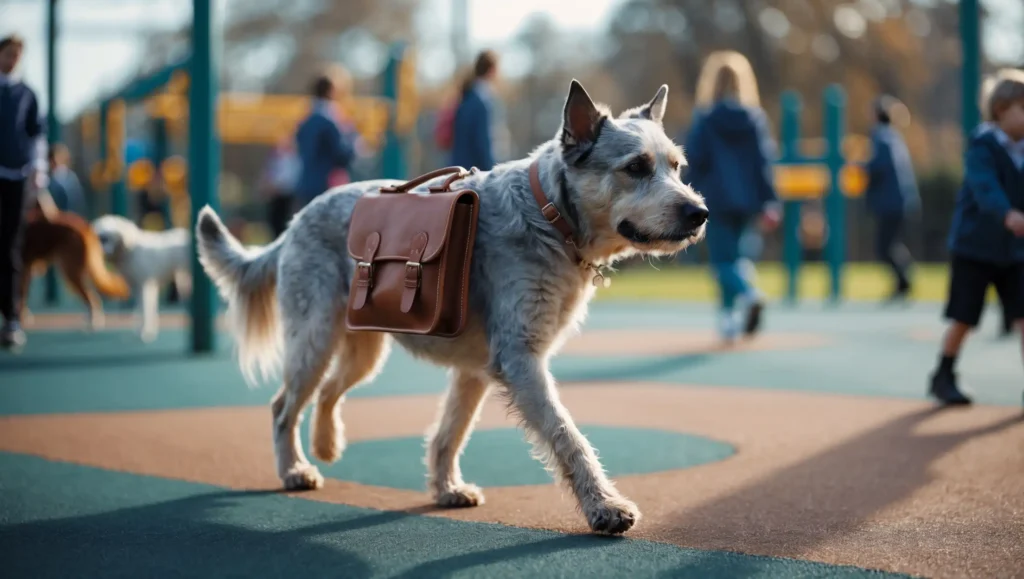What Are Reinforcement Zones?
The way I like to think of reinforcement-based dog training is in creating reinforcement zones for our dog—places or positions we want him to value due to the high reinforcement he received in training for just being there. Think: coming to sit in front of you after a recall; resting on a mat while you eat dinner; walking on a specific side of your body while on leash; lying down at “middle” when in a crowd.
These are all potential reinforcement zones for your dog—and they make our lives easier for teaching them!
Creating Reinforcement Zones for Training
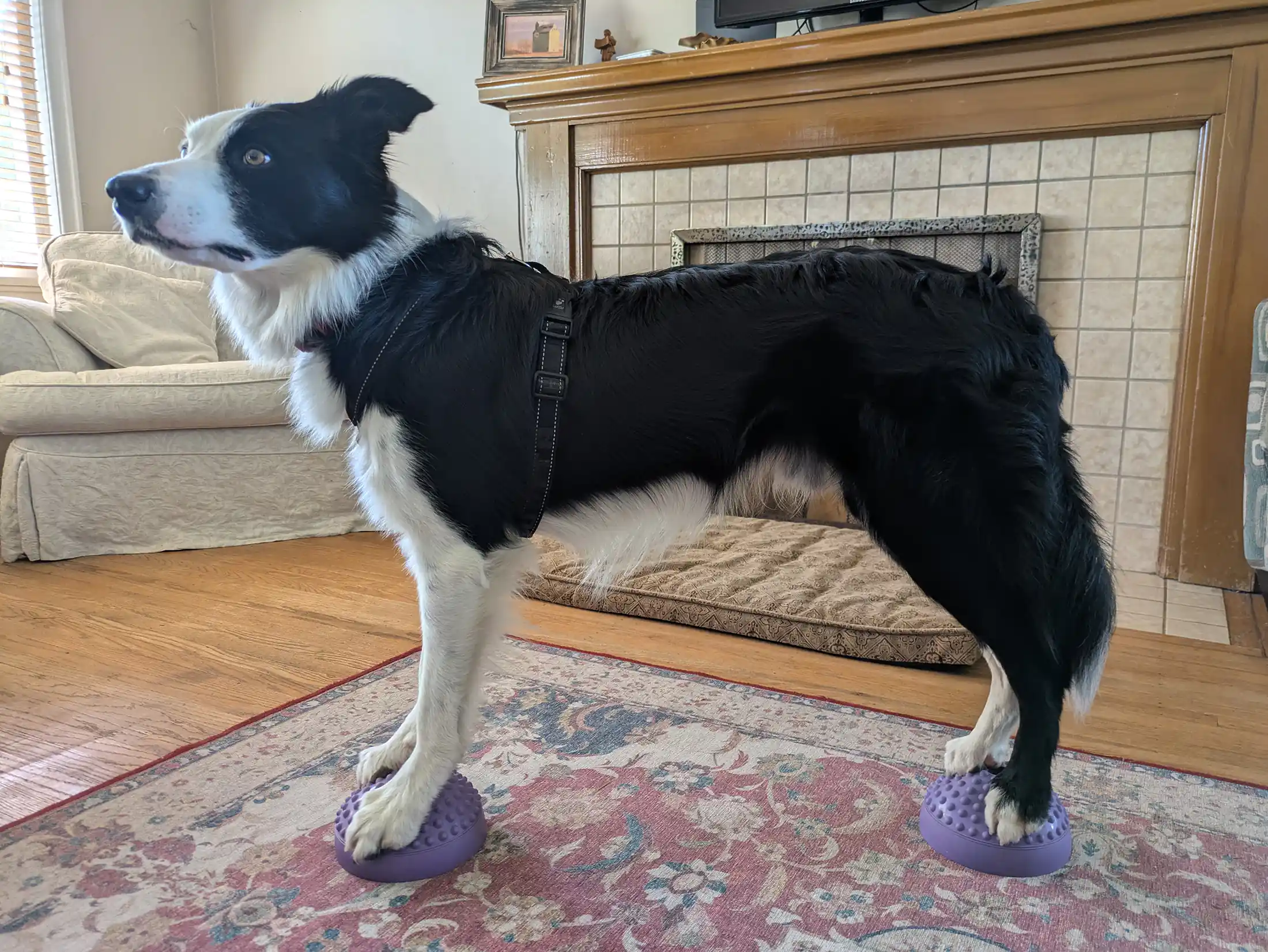
Consider the photo above…
Besides it being a bizarre thing to ask of a dog (unless you understand that it is an exercise to improve core strength, hip stability, and pelvic balance—great fitness skills for agility), what I marvel at in this photograph is how eager my dog is to get into this position. He is so quick to do this, I don’t even have a cue for it or any need to ask him to balance on these single pods. Just putting the pods on the ground is enough for him. He does the happy dance!
Now to be fair, it took me a few months to teach this difficult exercise, but through the training method of shaping and a high rate of reinforcement, my dog gets very keen when I put these two pods on the ground, all because he considers this position to be a reinforcement zone. In the months it took to teach this exercise, my dog Killy got a fair number of treats for balancing his feet on these pods. The pods on the ground represent the opportunity to get reinforcement, and because I use reinforcement so much in my training, my dog is now very quick to identify what he can do to get the GOOD stuff, even if it is a weird and highly challenging behavior. In part, I think he enjoys the challenge and the praise from me.
The Power of High Reinforcement
Understanding this in your training will make many of your goals more achievable if you think of them in terms of creating specific reinforcement zones, or hot spots, for your dog. A few simple ones that we all benefit from are behaviors I mentioned above: learning where heel position is to create loose leash walking, settling on a cot or bed, and using the popular “middle” position when in a crowd.
When I teach these basic pet dog behaviors to my students, what I often notice is that most people will give a single treat where I will give three. The dog that gets one treat for getting on his mat versus the dog that gets three treats is obviously going to have less value for that mat. I also do a high number of repetitions (as long as the dog is motivated) so that a single training session might see 20-30 treats for one behavior. I might use my dog’s meal as part of the training, or at the very least a high-value treat that can replace some of my dog’s breakfast. The way I see it…dogs need to eat and they enjoy learning and working, so make some of those calories count!
Practical Examples of Reinforcement Zones
Set a mat up in your kitchen and every time your dog goes to his mat, toss a handful of treats on it (I keep a jar of tiny kibble on the counter). Make sure your dog goes to the mat first—don’t lure him there with treats. With some practice, you can teach your dog to rest on his mat while you are in the kitchen cooking; much better than having him mooch underfoot or worse, jump up to steal that block of havarti cheese.
For leash walking, choose a side you want your dog to walk on. If you have a puppy, then great! Start early. Bring your dog onto that side of your body and into a sit position and reinforce with several treats before you release him. Repeat. Once your dog enjoys sitting at that side of your body, you can add motion while reinforcing. Through a variety of pattern games and leash exercises, we can make loose leash walking a fun focus game. That is for another blog post!
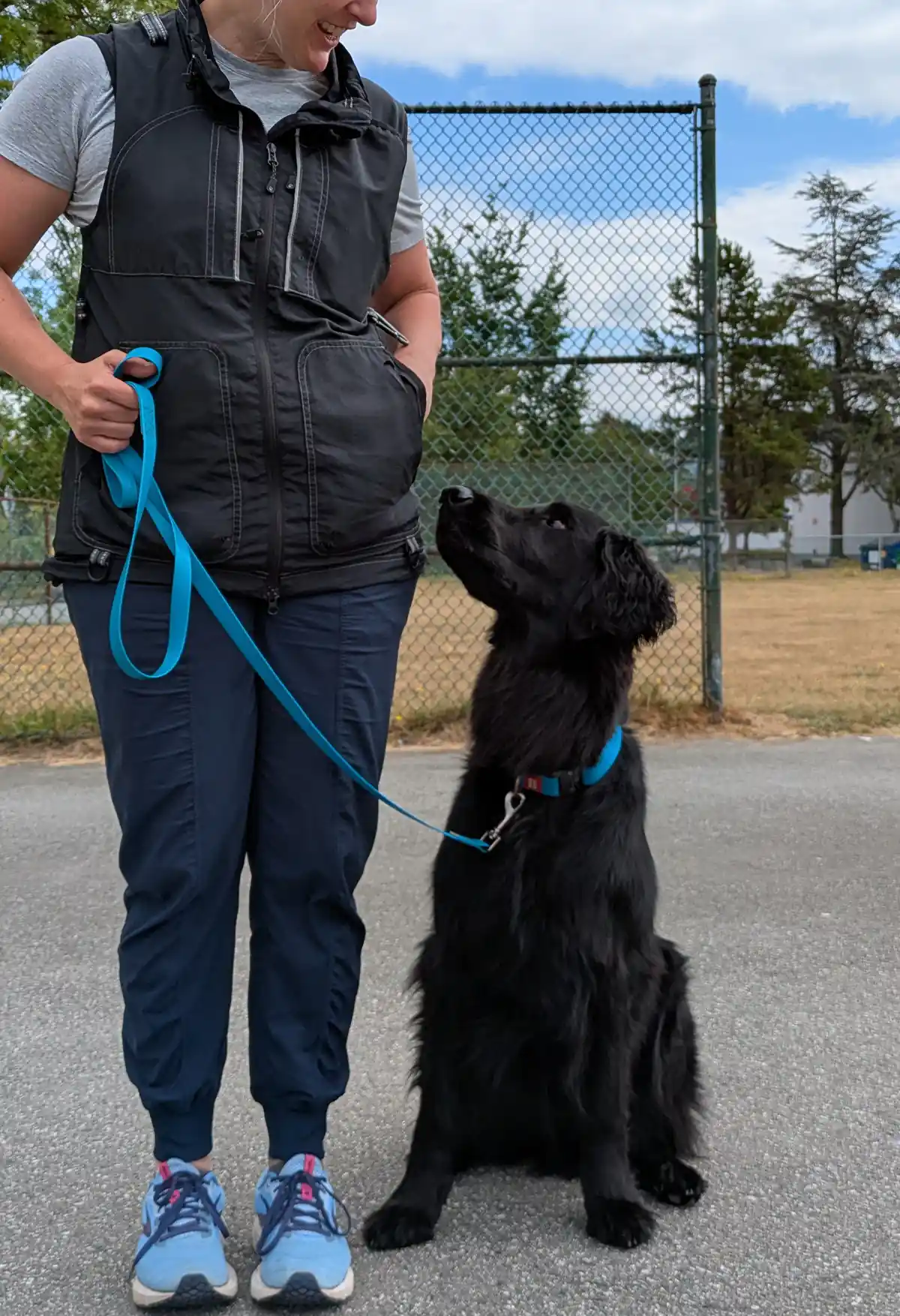
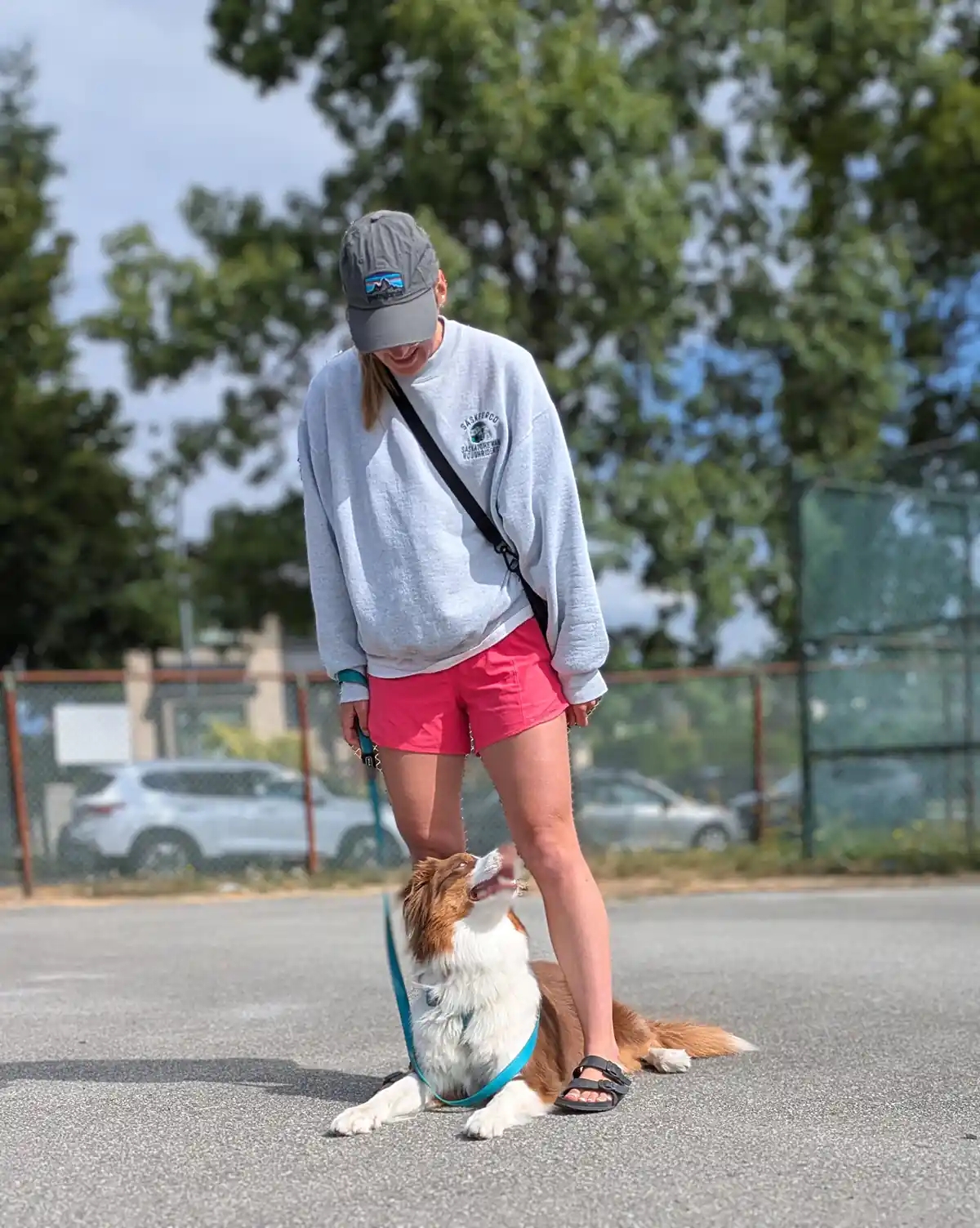
Middle is a fun and popular trick to teach a puppy—coming around and through your legs into a sit or a down position. This behavior is great for elevators, busy crowds, and any time you need a standby cue for your dog. I use this as my start line behavior in agility. You could lure or use a nose touch to help your dog find the middle position and then reinforce with 3 to 5 treats; toss a treat to reset; start again! Once your dog likes the middle position, you can put a cue to the behavior—Peek A Boo is one of my favorites.
Tips for Effective Reinforcement Training
Try this experiment on your daily walks. Identify a tree stump, a bench, or a rock that you want to turn into a reinforcement zone. Every time you approach that object (it might be a couple of times a day if it is on your usual route), get your dog on it and feed 3 to 5 treats and then carry on with your walk. See how long it takes before your dog eagerly begins to pull you toward that object when you approach.
That is the power of the reinforcement zone!
